
Stephen Phillip Bracks is a former Australian politician and was the 44th Premier of Victoria. He first won the electoral district of Williamstown in 1994 for the Labor Party and was party leader and premier from 1999 to 2007.
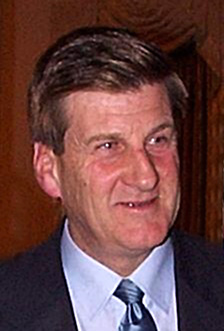
Jeffrey Gibb Kennett is an Australian former politician who served as the 43rd Premier of Victoria between 1992 and 1999, Leader of the Victorian Liberal Party from 1982 to 1989 and from 1991 to 1999, and the Member for Burwood from 1976 to 1999. He is currently a media commentator.

Joan Elizabeth Kirner was an Australian politician who was the 42nd Premier of Victoria, serving from 1990 to 1992. A Labor Party member of the Parliament of Victoria from 1982 to 1994, she was a member of the Legislative Council before later winning a seat in the Legislative Assembly. Kirner was a minister and briefly deputy premier in the government of John Cain Jr., and succeeded him as premier following his resignation. She was Australia's third female head of government and second female premier, Victoria's first, and held the position until her party was defeated in a landslide at the 1992 state election.

The Democratic Labor Party (DLP) was an Australian political party. The party came into existence following the 1955 ALP split as the Australian Labor Party (Anti-Communist), and was renamed the Democratic Labor Party in 1957. In 1962, the Queensland Labor Party, a breakaway party of the Queensland branch of the Australian Labor Party, became the Queensland branch of the DLP.

The 2002 Victorian state election, held on Saturday, 30 November 2002, was for the 55th Parliament of Victoria. It was held to elect the 88 members of Victorian Legislative Assembly and 22 members of the 44-member Legislative Council.

Sir Albert Arthur Dunstan, KCMG was an Australian politician who served as the 33rd premier of Victoria from 1935 to 1943 and from 1943 to 1945 and as the third deputy premier of Victoria for five days in March 1935. A member of the Country Party, now the National Party, his term as premier was the second-longest in the state's history and the longest of any third-party premier. He was the first person to hold the office of premier in its own right, and not an additional duty taken up by the Treasurer, Attorney-General or Chief Secretary.

Thomas Tuke Hollway was the 36th Premier of Victoria, and the first to be born in the 20th century. He held office from 1947 to 1950, and again for a short period in 1952. He was originally a member and the leader of the United Australia Party (UAP) in Victoria, and was the inaugural leader of the UAP's successor, the Victorian division of the Liberal Party, but split from the Liberals after a dispute over electoral reform issues.

The 1999 Victorian state election, held on Saturday, 18 September 1999, was for the 54th Parliament of Victoria. It was held in the Australian state of Victoria to elect the 88 members of the state's Legislative Assembly and 22 members of the 44-member Legislative Council. The Liberal–National Coalition led by Jeff Kennett and Pat McNamara, which had held majority government since the 1996 election, lost 15 seats and its majority due mainly to a swing against it in rural and regional Victoria.

The 1996 Victorian state election, held on Saturday, 30 March 1996, was for the 53rd Parliament of Victoria. It was held in the Australian state of Victoria to elect all 88 members of the state's Legislative Assembly and 22 members of the 44-member Legislative Council. The election took place four weeks after the 1996 federal election which swept the Labor Party from power nationally.

The 1992 Victoria state election, held on Saturday, October 3. was for the 52nd Parliament of Victoria. It was held in the Australian state of Victoria to elect all 88 members of the state's Legislative Assembly and 22 members of the 44-member Legislative Council.
Alan John Brown is an Australian former politician who served as a Liberal member of the Victorian Legislative Assembly, and Leader of the Opposition from 1989 to 1991.
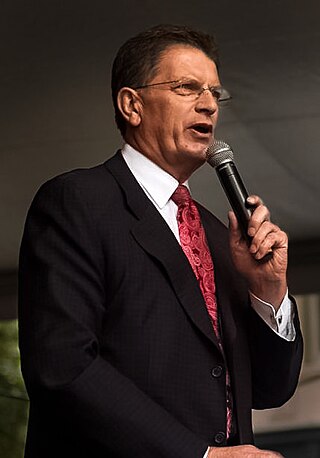
The 2010 Victorian state election, held on Saturday, 27 November 2010, was for the 57th Parliament of Victoria. The election was to elect all 88 members of the Legislative Assembly and all 40 members of the Legislative Council. The incumbent centre-left Labor Party government, led by John Brumby, was defeated by the centre-right Liberal/National Coalition opposition, led by Ted Baillieu. The election gave the Coalition a one-seat majority in both houses of parliament.
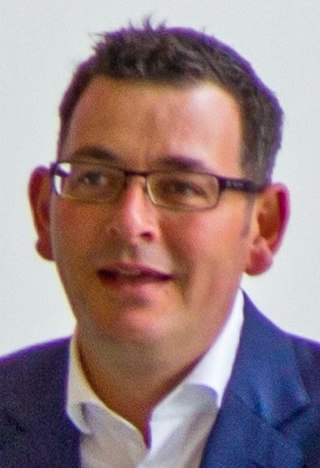
The 2014 Victorian state election, held on Saturday, 29 November 2014, was for the 58th Parliament of Victoria. All 88 seats in the Victorian Legislative Assembly and 40 seats in the Victorian Legislative Council were up for election. The incumbent centre-right Coalition minority government, led by Liberal Party leader and Premier Denis Napthine and National Party leader and Deputy Premier Peter Ryan, was defeated by the centre-left Labor Party opposition, led by Daniel Andrews. The Greens won two lower house seats, their first Legislative Assembly seats in a Victorian state election, whilst increasing their share of upper house seats. The new Andrews Ministry was sworn in on 4 December 2014.
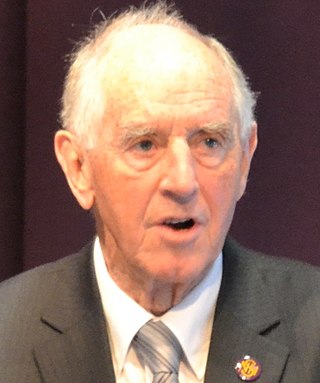
The 1985 Victorian state election, held on Saturday, 2 March 1985, was for the 50th Parliament of Victoria. It was held in the Australian state of Victoria to elect all 88 members of the state's Legislative Assembly and 22 members of the 44-member Legislative Council. Since the previous election, the number of members of the Legislative Assembly was increased by 7 to 88.
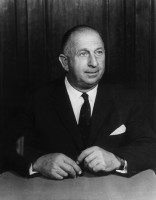
The 1955 Victorian state election was held in the Australian State of Victoria on Saturday, 28 May 1955 to elect 65 members of the state's Legislative Assembly.
Roderick Alexander Mackenzie OAM is an Australian politician. He was a member of the Victorian Legislative Council from 1979 to 1992, representing Geelong Province for the Labor Party (1979–1987) and then as an independent (1987–1992). A minister in the Cain government and President of the Victorian Legislative Council from 1985 to 1988, he resigned from the Labor Party in December 1987 and unsuccessfully recontested his seat in 1992 as part of the Geelong Community Alliance, a team of local independent candidates.
The Victorian National Party, officially known as the National Party of Australia – Victoria, is an Australian political party that serves as the state branch of the federal National Party in Victoria. It represents graziers, farmers, miners and rural voters.
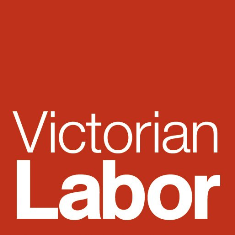
The Victorian Labor Party, officially known as the Australian Labor Party and commonly referred to simply as Victorian Labor, is the Victorian state branch of the Australian Labor Party (ALP). The party forms the incumbent government in the state of Victoria and is led by Jacinta Allan, who has served concurrently as Premier of Victoria since 2023.

The Victorian Liberal Party, officially known as the Liberal Party of Australia (Victorian Division) and branded as Liberal Victoria, is the state division of the Liberal Party of Australia in Victoria. It was formed in 1949 as the Liberal and Country Party (LCP) and simplified its name to the Liberal Party in 1965. The party sits on the centre-right to right-wing of the Australian political spectrum, and is currently led by Brad Battin.

The premier of Victoria is the head of government of the state of Victoria in Australia. The premier leads the Cabinet of Victoria and selects its ministers. The premier is appointed by the governor of Victoria, must be a member of the Victorian Legislative Assembly, and command confidence in the lower house of the Parliament of Victoria. The premier is usually the leader of the political party that holds a majority of lower house members.

















